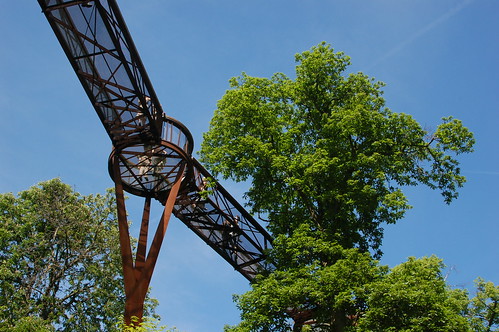 They used to fill him with melancholy, but the scale and depth of colour means that Dan has come to love sunflowers
They used to fill him with melancholy, but the scale and depth of colour means that Dan has come to love sunflowersGales swept through the valley last month. It was horrible watching it happen, a summer's growth bashed, torn at and buffeted. Miraculously things stood their ground save a couple of tripods toppled, but the sunflowers were smashed and shattered, their limbs akimbo, their faces laying in the mud like a legion of freshly felled soldiers.
We had grown 50 or so plants and six or seven varieties and at the point of the storm they were at their moment of perfection. The leading stem, already flowered and browning with seed, had given way in most of the plants to a secondary branching of limbs and you were dwarfed when you walked among them. It was the second coming of flower that bore the brunt of the storm and it took me the best part of a day to untangle the carnage. The worst of the damage was composted, but by evening I had several buckets of flowers and the opportunity to look closely at them in all their autumnal magnificence. A few were what you might expect of a sunflower – true gold with soot-black faces – but the contrast among them has been as rich and variable as an autumn sunset. There are lemons and ivory whites, ginger, cinnamon and apricot overlayed with plum and brown "rusting". The darkest are almost black against the sky, but close up reveal themselves to be the deepest of reds, with claret and chestnut undercurrents.
It's taken most of my adult life to get over a melancholy association of the sunflower with the end of the summer holidays. They were always there on the journey back to school, poking over fences and smiling, despite my downward mood. Today things are different. I look forward to the change of tempo as summer departs and the sunflowers are part of that, encapsulating all the energy of the last few months.
The plants here were started in the frame in April, two seeds to a pot, which were thinned to one once it was clear there was a take. In the red-flowered varieties I singled out the seedling with the darkest veining in the leaf in the hope that they would spawn the richest-coloured forms.
Though I could just as easily have sown the seed directly in the ground and taken my chances, the potted seedlings were planted out in the middle of May, a couple of feet apart and in a bed of their own so I could see what they were capable of. Fast-growing annuals such as these are an ideal way of testing your conditions and in no time they were letting us know they were happy. They were knee height a month later, needing a stout cane by the end of June and a month after that our views down the valley had gone. Some, it became clear very quickly, were not community players, needing all the space and the light they could get, their drama and bulk precluding them from an artful weave among the vegetables. Others were more accommodating, making a lofty complement to a kitchen garden or as a splash of colour among the perennials.
"Italian White" was the weakest of the batch and I've had trouble germinating it in the past, but the effort is worth it. The plants grow to shoulder height only, with multi-branched bushes giving way to creamy flowers no bigger than the palm of your hand. "Valentine" is a similar-sized plant with a slightly more lemon flower, but it has proven to be more reliable his year. Both are lovely among bronze fennel if you can keep the slugs off when they are young.
"Claret" seems to be the most reliable of the dark-flowered varieties, producing slightly smaller flowers than "Velvet Queen" and resisting the stray into marmalade tones. If you are happy with variation in the reds then the latter is a good selection, both varieties branching liberally and eventually reaching the best part of 9ft.
The plants are browning now and straddling the path in tatters, but I will leave their remains for the birds to pick over and enjoy watching the stems topple as winter advances.
Tip Box
Sunflowers are easily germinated from home-saved seed. Pick the heads now before the seed rots and hang upside down in a dry room until they rattle free. Save all you need for next year and hang the heads up in a cold snap for the tits
No comments:
Post a Comment